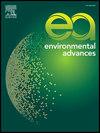Microplastic-contamination in the flesh and gastrointestinal tract of nile tilapia (Oreochromis niloticus) reared in floating net cages at lake Ranu Grati, Pasuruan, East Java, Indonesia
Q2 Environmental Science
引用次数: 0
Abstract
In recent years, microplastics (MPs) have emerged as a prominent environmental problem in waters and environments, including lake waters. Microplastics in freshwater, such as those in floating net cages (FNC), can be consumed by Nile tilapia (Oreochromis niloticus), one of the commercially available cultivated fish in Indonesia. This study aims to determine the prevalence of microplastics and compare their characteristics in the surface water, flesh, and gastrointestinal tract (GIT) of Nile Tilapia (O. niloticus) at Lake Ranu Grati, Pasuruan, East Java, Indonesia. Visual characteristics of MPs were observed using a stereo microscope, and polymers were analysed by ATR-FTIR (Attenuated Total Reflection-Fourier Transform Infrared Spectroscopy). The abundance of MPs from water sample locations in Lake Ranu Grati reached 1116 MPs particles. In the water samples, the inner and outer sides of the FNC are dominated by the MPs with a size range of 251–500 µm and 1001-2000 µm in the milieu of Ranu Grati Lake. The most common MPs' types and colours are fibre and black, dominated by Polyethylene (PE). In 25 O. niloticus samples, 576 particles of MPs were found in the flesh and 724 particles in the gastrointestinal tract (GIT). This study found no significant variation in microplastic abundance between flesh and GIT samples (p>0.05; Mann-Whitney U test). Microplastics in Nile Tilapia flesh samples were dominated by blue fibres with a size range of 101–250 µm, and the polymer found was PA (polyamide). Meanwhile, in the GIT samples, microplastics were dominated by black fibre, with a size range of 251–500 µm, and the polymer found was PA (polyamide).
在印度尼西亚东爪哇 Pasuruan 的 Ranu Grati 湖浮动网箱中饲养的尼罗罗非鱼(Oreochromis niloticus)鱼肉和胃肠道中的微塑料污染情况
近年来,微塑料(MPs)已成为包括湖泊水域在内的水域和环境中的一个突出环境问题。淡水中的微塑料,如浮动网箱(FNC)中的微塑料,可被尼罗罗非鱼(Oreochromis niloticus)食用,尼罗罗非鱼是印度尼西亚的商业养殖鱼类之一。本研究旨在确定微塑料的普遍程度,并比较印尼东爪哇 Pasuruan 的 Ranu Grati 湖中尼罗罗非鱼(O. niloticus)的表层水、鱼肉和胃肠道(GIT)中微塑料的特征。使用体视显微镜观察 MPs 的视觉特征,并使用 ATR-FTIR(衰减全反射-傅立叶变换红外光谱)分析聚合物。在拉努格拉蒂湖的各处水样中,多孔质微粒的数量达到了 1116 个。在水样中,FNC 的内侧和外侧主要是 Ranu Grati 湖环境中尺寸范围为 251-500 µm 和 1001-2000 µm 的 MPs。最常见的 MPs 类型和颜色是纤维和黑色,以聚乙烯(PE)为主。在 25 个尼罗河鱼样本中,576 个 MPs 颗粒在鱼肉中被发现,724 个颗粒在胃肠道(GIT)中被发现。该研究发现,鱼肉样本和胃肠道样本之间的微塑料丰度差异不大(p>0.05; Mann-Whitney U 检验)。尼罗罗非鱼鱼肉样本中的微塑料以蓝色纤维为主,尺寸范围为 101-250 µm,聚合物为 PA(聚酰胺)。而在消化道样本中,微塑料以黑色纤维为主,尺寸范围为 251-500 微米,聚合物为 PA(聚酰胺)。
本文章由计算机程序翻译,如有差异,请以英文原文为准。
求助全文
约1分钟内获得全文
求助全文
来源期刊

Environmental Advances
Environmental Science-Environmental Science (miscellaneous)
CiteScore
7.30
自引率
0.00%
发文量
165
审稿时长
12 weeks
 求助内容:
求助内容: 应助结果提醒方式:
应助结果提醒方式:


